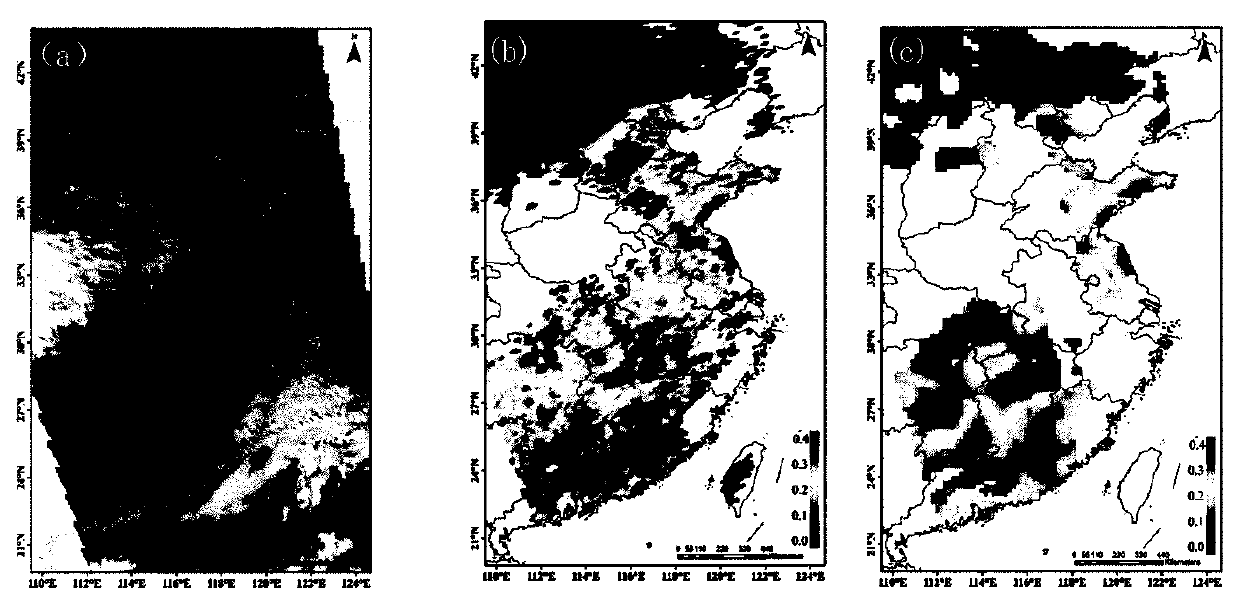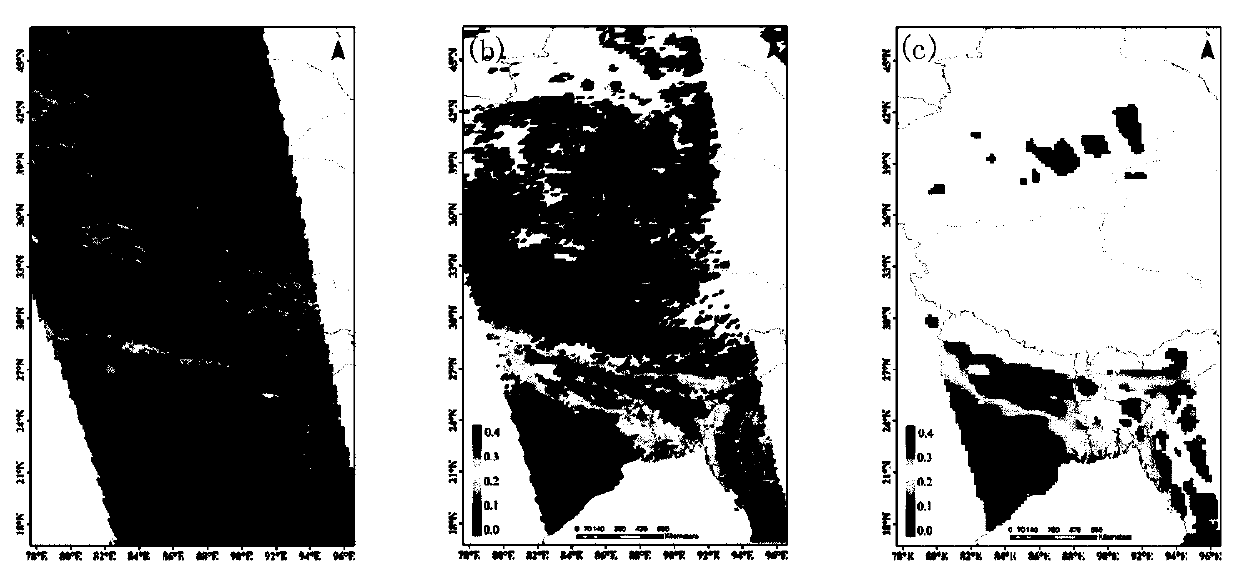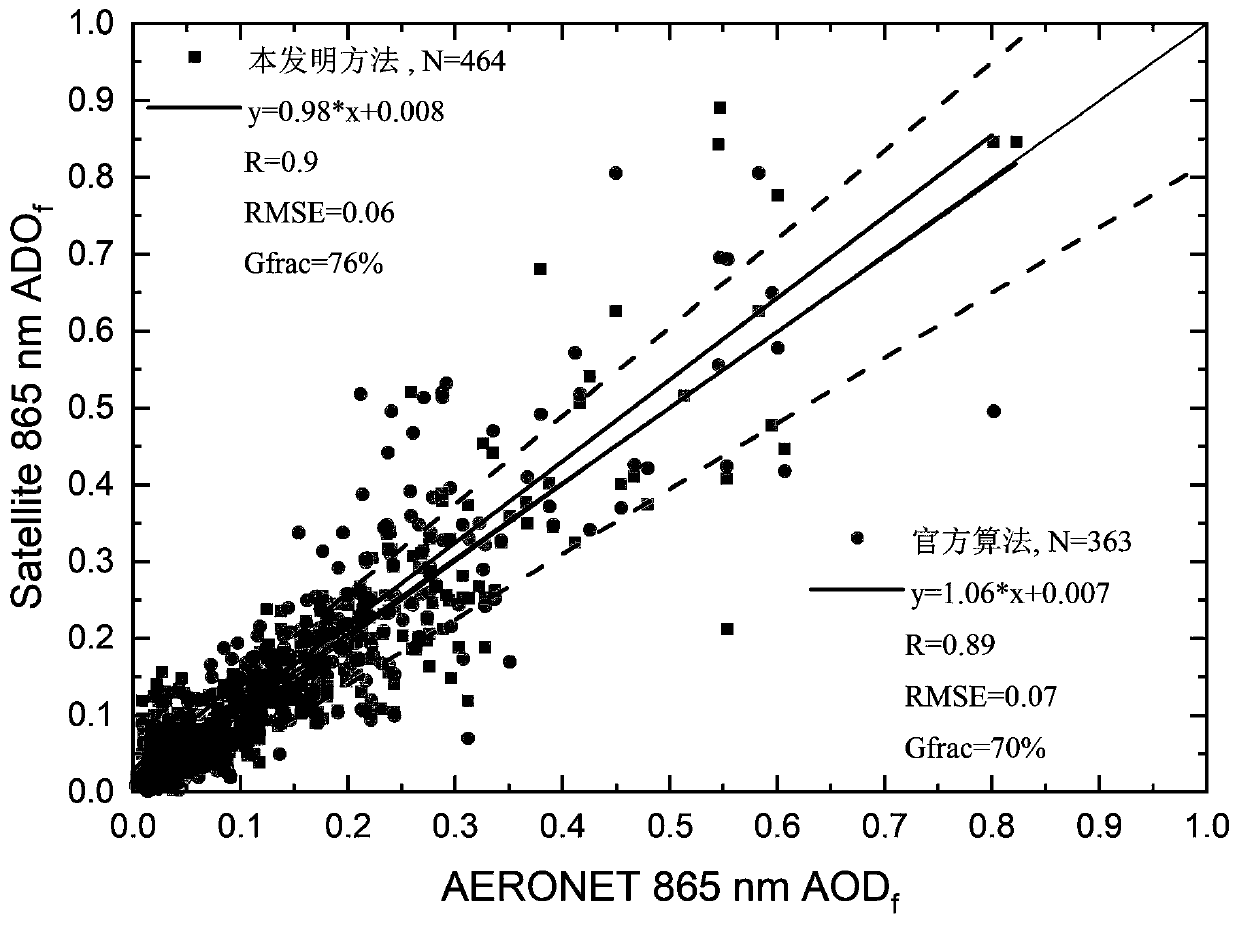Fine-modal aerosol parameter inversion method
A parameter inversion and aerosol technology, which is applied in the field of air pollution control, can solve the problems of missing products, low spatial resolution, and low precision, and achieve high spatial coverage, high spatial resolution, and high precision.
- Summary
- Abstract
- Description
- Claims
- Application Information
AI Technical Summary
Problems solved by technology
Method used
Image
Examples
Embodiment 1
[0067] figure 1 (a) is the true color image of the POLDER satellite image of Eastern China on November 15, 2011, (b) is the result of the fine-modal aerosol optical thickness of the method of the present invention, and (c) is the official fine-modal aerosol optical thickness result. The surface types in this area are mainly vegetation, cultivated land, and cities. It can be seen from the figure that the resolution of the official inversion is about 18km per pixel; the optical thickness of the fine-mode aerosol inverted by the method of the present invention is generally the same as that of the official inversion. The results are consistent in spatial distribution, but the method of the present invention has a higher spatial coverage, especially in densely populated and economically developed coastal areas, to make up for the lack of a large number of products in the official algorithm in this area. In addition, the fine modal aerosol optical thickness of the present invention h...
Embodiment 2
[0069] figure 2 (a) is the true color image of the POLDER satellite image of Northwest China and India on November 18, 2011, (b) is the fine-modal aerosol optical thickness result of the method of the present invention, (c) is the official fine-modal aerosol optical thickness result. The surface types in this area include deserts, mountains, and cultivated land. It can be clearly seen from the figure that the resolution of the official inversion is about 18km per pixel; the fine-mode aerosol optical thickness inverted by the present invention is in the desert. The spatial coverage of mountainous and coastal areas is significantly higher than that of the official algorithm, which makes up for the lack of a large number of products in this surface area of the official algorithm, especially in the Qinghai-Tibet Plateau where the terrain is complex and aerosol retrieval is difficult. In addition, the fine-modal aerosol optical thickness product of the algorithm of the present in...
Embodiment 3
[0071] In order to quantitatively evaluate the precision of the fine-mode aerosol optical thickness retrieved by the present invention, the results of the foundation AERONET stations located on different ground types are selected for verification. image 3 Based on the three-year POLDER data from 2010 to 2012, the fine-mode aerosol optical thickness inverted by the method of the present invention and the official algorithm is verified with the ground station point. From the results, it can be seen that whether it is the number of inversions N, The correlation R, the root mean square error RMSE are still the ratio Gfrac that falls within the error range, and the fine-mode aerosol optical thickness retrieved by the present invention is better than the official algorithm result, indicating that the present algorithm is significantly better than the official algorithm. Figure 4 Based on the POLDER data from 2010 to 2012, the method and official algorithm of the present invention and ...
PUM
 Login to View More
Login to View More Abstract
Description
Claims
Application Information
 Login to View More
Login to View More - R&D
- Intellectual Property
- Life Sciences
- Materials
- Tech Scout
- Unparalleled Data Quality
- Higher Quality Content
- 60% Fewer Hallucinations
Browse by: Latest US Patents, China's latest patents, Technical Efficacy Thesaurus, Application Domain, Technology Topic, Popular Technical Reports.
© 2025 PatSnap. All rights reserved.Legal|Privacy policy|Modern Slavery Act Transparency Statement|Sitemap|About US| Contact US: help@patsnap.com



